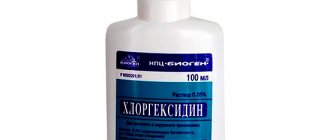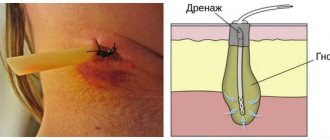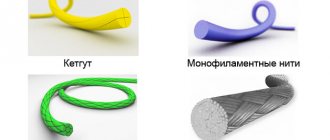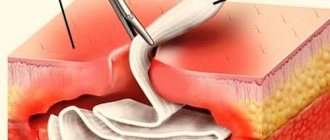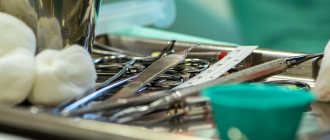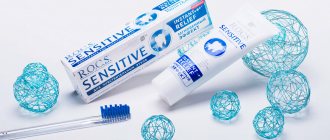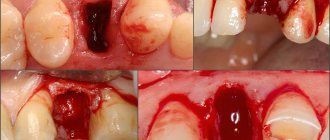The day on which sutures are removed after surgery is determined by their type. Stitching the incision is the most common and effective way to restore the integrity of the skin after surgery. There are immersing fixed and removable postoperative sutures. The main qualities that the material used for stitching cuts must have are reliability and strength. The more reliable the knot is made, the lower the risk of complications. Seams should be made as small as possible. If you use a large amount of thread, it may be rejected by the body. The knot should be small. Since the body is not able to distinguish suture material from a foreign body, in the presence of bulky ligatures a violent response occurs.
Sutures after ruptures during childbirth: types of closure material
To understand the speed of healing, you need to know what material was used for stitching. It should be quite elastic and stretch well so that there is no strong tension or tissue necrosis. But the thread must be strong to withstand the load. The suture material must be neutral and absolutely inert with respect to body tissues. Synthetic and natural fibers can be used for stitching. It may or may not be absorbable.
Sutures after ruptures during childbirth, types:
- Natural materials include silk and cotton. Silk is a durable material, and quite elastic, and can form a strong knot. This material is conditionally non-absorbable, because over time its strength decreases, and after about a year not a trace of the threads remains. Silk fibers are not inert and very often infections can occur at the site of their contact with the skin. Cotton has low strength and can also cause inflammation.
- The suture material is selected depending on the location of the tears. If the gap is internal, then absorbable materials are used. The best option is catgut. This is a natural fiber that is characterized by a pronounced reaction and risk of infection.
- Gynecologists note the inconvenience of using catgut. This material has been rarely used lately. Mostly absorbable polymers are used, which practically do not cause a reaction from the body. Dissolves quickly and is very durable. They are convenient to use due to the lack of slipping during use. Polymer threads are often used in cardiac surgery to stitch tendons.
Episiotomy
How can you tell if a wound has healed?
Not only early, but also late removal of suture material is considered dangerous. In the first case, there is a high probability of wound divergence, in the second - ingrowth and suppuration of the threads. As a rule, at the end of the operation, the veterinarian announces a conditional healing date. On average, healing is about 10-14 days and depends on the location of the surgical intervention:
- neck and head – 5-7 days;
- chest, paws and peritoneum – 10-14 days.
In addition to the area operated on, age affects the healing rate. Tissue regeneration in puppies is higher than in adults and older animals.
Focus on the date announced by the doctor, but do not forget to monitor external changes. After 4-5 days, the formation of granulation is acceptable - a painless ball under the skin. It will resolve on its own a little later. If the edges of the incision have become almost invisible, and the nearby skin is not red or inflamed, proceed to removal.
You should postpone the procedure and seek help from a doctor only if the following symptoms appear:
- unpleasant odor;
- increased redness;
- discharge of pus;
- presence of bleeding or blood crusts;
- increase in local temperature;
- formation of swelling and inflammation.
All of these symptoms occur when an infection occurs and are fraught with an abscess with subsequent blood poisoning. If you find at least one of them, give up independent actions in favor of visiting a veterinary clinic. Pulling out threads during the inflammatory process is more difficult due to pain. Monitor your pet carefully to avoid infection.
How long does it take for a stitch to heal after tearing during childbirth?
Stitches are sometimes simply necessary and cannot be avoided. Midwives try to prevent tears from occurring and perform an episiotomy to make the suture smooth and even, without ragged edges. After all, sewing flaps of fabric is much more difficult than sewing an even cut. In addition, tears in the crotch area do not look aesthetically pleasing, even after quite careful and careful stitching of the fabrics.
How long does it take for a stitch to heal after tearing during childbirth:
- The first five days, when the wound is just sutured, an inflammatory reaction may be observed. A huge number of leukocytes are sent to this area, which are engaged in the destruction of microbes. There may be swelling, redness and pain. During this period, the tissues have not yet grown together, and they are held end to end with the help of sutures.
- From days 7 to 14, the fibroblast phase begins. It is during this period that granular tissue appears, collagen and elastin are formed. Already during this period, a more dense connection of tissues is observed, but the threads are removed quite early. The threads are removed after the tissues have fused together well enough.
Episiotomy diagram
When should you see a doctor?
Complications after such an operation are rare. But you should still pay attention to symptoms such as:
- long lasting pain in the incision area,
- the appearance of compactions,
- increase in scar area,
- suppuration,
- fluid leaking from the seam,
- prolonged increase in body temperature,
- nausea.
If the stitches itch or pull after blepharoplasty, what should you do?
This question is asked by patients who have undergone surgery. In the eye area there may indeed be a feeling of itching and a sensation of “stretching” tissue. This is completely normal and there is no need to panic. But scratching the surgical area is not allowed, even in case of very severe itching, so as not to damage the injured areas even more. Medications prescribed by your doctor can help reduce itching and discomfort. If the sensations are too intense and do not decrease after removal of the sutures, you should consult a surgeon.
Why were internal stitches placed after childbirth?
During childbirth, ruptures in the cervix and perineum are usually observed. As mentioned above, now the process of childbirth is designed in such a way that there are no ruptures during the manipulation; in other words, the tissue is cut.
Why were internal stitches placed after childbirth?
- Indications for making an incision in the cervix, vagina and perineum are fetal presentation, a large child, as well as some gynecological diseases of the woman.
- An incision in this area helps to expand the space and speed up the birth process. Episiotomy is often used if the child suffers from hypoxia and has been without amniotic fluid for a long period of time.
- Inside, in the area of the cervix and vagina, modern polymer materials are used that are absorbable. Only on the outside are threads that need to be removed.
Dissection scheme
On what day are stitches removed after childbirth?
Typically, the process of removing sutures is carried out approximately 7-10 days after they are applied. If a woman in labor is in the maternity hospital for 7 days, the threads are removed in the hospital, in the postpartum ward.
On what day are sutures removed after childbirth?
- If the process of the birth of the fetus is successful, and there is no need to detain the mother and child in the maternity hospital, the woman in labor is discharged on the third day. You will have to come to the doctor approximately 7-10 days after the stitches are applied to remove them.
- The doctor cuts the threads with scissors and pulls them out with tweezers. This is an unpleasant procedure, the pain of which depends on the woman’s pain threshold. Some people compare it to a mosquito bite, others it really hurts a lot.
- The length of the suture on the outside is approximately 2-3 cm. It often extends from the labia minora from below and is almost invisible. If a woman follows the doctor’s advice, then no traces remain after the episiotomy.
Scheme
The need for suturing in dentistry
Surgical intervention and, as a consequence, suturing are indicated for the following manipulations:
- Removal of wisdom teeth - third molars differ from the rest in the large size of the tooth crown and its root. Late eruption, the position of the “extreme” in the dentition very often leads to a violation of the physiological location of the tooth or even its impaction (partial or complete failure to erupt). In this regard, the procedure for removing a wisdom tooth is often accompanied by complications - extensive damage to the soft tissues of the oral cavity and alveolar process, ligaments, and blood vessels. To avoid this kind of consequences, dentists apply stitches to reduce the wound.
- Implantation - its implementation is always accompanied by the need for surgical intervention. A deep incision in the gum requires suturing.
- Maxillofacial operations - elimination of the consequences of traumatic injuries, congenital defects of the dentofacial apparatus.
- Removal of tumors of various etiologies - the integrity of the soft tissues of the oral cavity is damaged, often requiring layer-by-layer sutures.
How long does it take for external sutures to heal after childbirth?
The process of fusion of external seams takes approximately 2 weeks. This is exactly the period during which a woman in labor should not sit down.
How long do external sutures take to heal after childbirth?
- You must be prepared that you cannot sit for 14 days, and all manipulations to care for the newborn and household chores must be done while standing or lying down. Therefore, familiarize yourself in advance with the positions for feeding your baby in a lying position.
- You can't even sit on one side. It is recommended to leave the maternity hospital in a reclining state, with the seat tilted back. Complete fusion of both internal and external seams occurs within 8 weeks. This is enough so that even when a certain load is applied, the seams do not separate.
- If you sit on your buttocks earlier than 14 days after an episiotomy, tissue rupture may occur.
Unhealthy nutrition contributes to ruptures in the suture area. Therefore, women in labor are often prescribed a diet with porridges, cereals, and stewed vegetables, which have a liquid consistency. It is necessary that dense fecal masses do not form in the intestines. Constipation can result in tissue rupture.
After childbirth
Creation of formwork for high-quality concrete maturation
Many inexperienced builders naively believe that it is enough to knock down several long boards into panels, pour concrete mixture into them and level the top with a trowel. In order for the process of strengthening concrete to proceed as quickly as possible, the formwork requires constant supervision and care. The main requirements include:
- minimizing shrinkage of boards and their deformation from solution pressure;
- eliminating the possibility of the exposed part of the concrete slab or foundation drying out;
- creating an optimal indoor climate and minimizing damage caused by sudden changes in temperature or humidity;
- protecting the formwork from possible mechanical damage.
Correct formwork for high-quality aging of concrete Source remontnik.ru
Immediately after pouring, the wooden structure is reinforced in the most vulnerable places with the highest concrete pressure. The freshly poured monolith is covered with film, protecting it from possible rain for the first few days. To understand how many days it takes to remove the formwork from the foundation, you need to familiarize yourself with the concept of strength gain and crystallization of concrete.
Crystallization of concrete mixture
Concrete is a complex physical and chemical compound with its own hardening characteristics. Immediately after pouring, natural processes begin that are difficult to detect with the naked eye. It is customary to distinguish three stages of concrete crystallization:
- Immediately after pouring the solution. Lasts no more than two minutes. In a solution supersaturated with moisture, a process of merging of calcium hydroxide and ettringite occurs.
Crystalline structure of concrete Source pikabu.ru
- An hour after pouring. Lasts up to 6 hours. The cement mixture turns into a waterproof dough.
- Lasts up to 36 hours after the cement paste is formed. The cement flakes form a dense lattice that turns the cement into stone.
In the question of how many days to remove the formwork, you should avoid haste. An incomplete concrete crystallization stage can completely destroy the entire monolithic structure. That is why the dismantling of the formwork should be done no earlier than after 2 days, even in the most favorable weather.
See also: Catalog of companies that specialize in calculation, installation and repair of foundations
How long does it take for internal sutures to heal after childbirth?
Complete healing occurs after 8 weeks; it is after this period of time that it is recommended to begin sexual activity after delivery. If the birth was difficult, there are stitches on the cervix, and muscle tissue is sewn together, then the recovery process can take up to six months.
How long do internal sutures take to heal after childbirth?
- It all depends on the specific situation and the recommendations of doctors. If there are no special instructions, then the wounds heal 2 months after delivery. If we are talking about a suture after a cesarean section on the uterus, then recovery occurs in about six months.
- Doctors recommend having another child no earlier than in two years. It is after 2 years that the suture becomes strong and dense enough to give birth on its own the next time.
After childbirth
How long does it take for internal stitches on the cervix to heal?
The main feature of internal sutures is their painlessness.
How long does it take for internal sutures on the cervix to heal:
- You can begin to be sexually active if you have stitches on the cervix after 2 months.
- There are a small number of nerve endings on the cervix, as well as inside the vagina, which is why the sutures heal painlessly and are practically not felt.
- If you palpate, even several years after the episiotomy, you can feel stitches or a mark from the incision on the cervix and vaginal walls.
- As for the external seams, after six months they become completely invisible.
External seams
How long does it take for a suture to heal after childbirth - how to behave?
External seams often become infected due to non-compliance with doctor's recommendations. A large amount of discharge, urine residues, lochia that are released from the uterus after delivery, and vaginal secretions enter this zone.
How long does it take for a seam to heal after childbirth, what to treat with:
- If this discharge gets on the stitches, inflammation, redness, and even swelling may occur. Within 5 days after suturing, pain and swelling are normal. But if the redness lasts more than 7 days, you need to urgently go to the hospital.
- There may be internal hematomas that need to be opened to drain the blood. If there is inflammation in this area, repeated cleaning and suturing are recommended.
- To prevent inflammation in this area, you need to wash your hands before using the toilet and change your pads frequently. Do not allow the gasket to touch the seams for more than 3 hours. Be sure to change linen and towels daily.
- Remember that for a month or two, depending on the complexity of labor, it is not recommended to take a bath. It needs to be replaced with a shower. It is necessary that the wound in this area is dry.
- Gynecologists often advise women in labor to lie on their side, sit on a circle or pillow. It is recommended to lie with your legs apart without underwear to prevent this area from sweating. High humidity provokes complications.
Woman in labor
Dismantling of wooden structures
The stage when you can remove the formwork during concreting is very important for the entire process of building a house. Compliance with the recommendations will preserve the integrity of the entire structure. The basic rule for stripping is to carefully remove the panels without knocking out or breaking out the boards. The use of crowbars, grinders or circular saws is not allowed - they can break off pieces of immature concrete.
Corner structural elements freeze faster Source ytimg.com
No matter how many days later the formwork is removed from the concrete, a clear sequence of actions is always followed. First, the corner parts of foundations or monolithic slabs are opened - these elements are the first to give up moisture and, as a result, quickly accumulate the necessary hardness. The next step is to unscrew the nuts from the metal ties. Then remove the vertical supports and carefully move the boards away from the concrete base. The remaining tying screws in the formwork are carefully trimmed using a cutting machine so that their edges do not protrude by more than 2-3 mm.
Under no circumstances should formwork be left in place, even if the construction freezes, due to the lack of resources necessary for this. The tree will draw in excess moisture, disrupting the uniform hardening of the foundation. In winter, leaving the formwork will lead to its destruction due to the freezing of water in the boards.
How and for how long should I treat sutures after childbirth?
External seams immediately after stitching are usually treated with antiseptics, brilliant green or peroxide. Ruptures are also treated daily in the postpartum ward. If there are no associated pathologies, then after the woman in labor is discharged home, it is not recommended to use substances to treat the wound. This is necessary to reduce contact with the postoperative wound.
How and how long to treat sutures after childbirth:
- Washing wounds with regular soap twice a day, morning and evening, speeds up healing. It is advisable, if possible, not to wear underwear, or to reduce its use to a minimum. At home, use disposable absorbent diapers and sleep without underwear.
- This way, the lochia will be absorbed into the diaper. On the Internet you can find a lot of advice on treating wounds with Traumeel and Levomekol. These ointments contain a large amount of fat, vegetable or synthetic oils, which interfere with normal tissue healing.
- It is recommended to use laundry soap and wash this area frequently. Instead of brilliant green, it is recommended to use antiseptics such as Miramistin and Chlorhexidine. Doctors advise not to go into this area again. Internal seams are not processed. Even in the maternity hospital they try not to interfere in this area. It is recommended to be examined by a local doctor within a month after delivery.
Newborn
Internal seams after childbirth: reviews
Of course, the episiotomy procedure is not the most pleasant, but it helps reduce the time of labor, protecting mother and baby. Below you can read reviews from women who experienced ruptures during childbirth.
Internal seams after childbirth, reviews:
Olga, 33 years old . Last year I gave birth to my first child; before that I had been treated for infertility for a long time. I am glad that I gave birth on my own, but there was a rupture in the cervix, I had to have stitches. I didn’t feel any pain, but six months have passed since the birth, I feel some discomfort during intimacy. Perhaps something is interfering. Although nothing hurt and doesn’t hurt now.
Svetlana, 28 years old . When I gave birth to my second child, they did an episiotomy because the fetus was large, weighing 4 kg 100 g. Given my weight 55 kg, this is a lot, so I’m not surprised that an incision was made. The suturing process was painless, but discomfort arose during the healing process. It didn’t scare me that I couldn’t sit and didn’t cause any discomfort, but the stitches constantly hurt and pulled. In the process of removing the stitches, it turned out that one of the uppermost ones had come apart. But over time, everything has grown together and nothing is visible, even upon detailed examination.
Yana, 31 years old . Last year I gave birth to my daughter, but the birth was an emergency and very fast. So I had an episiotomy. There are no ruptures on the cervix, but there is a suture in the vaginal area and outside. I didn’t feel pain inside, but outside there was some kind of hell. Since the child was very restless, I could not go to the doctor to remove the stitches, so I removed them at home myself. It did not heal very well; traces of the intervention and excess tissue in the area of the vaginal opening are visible. I was dissatisfied and may soon be ready for plastic surgery. The extra tissue in this area really bothers me. I understand that only her husband sees her, but I feel discomfort and complexes.
Newborn
Read related articles:
- Symptoms of premature birth
- Folk signs for determining the sex of the unborn child
- 10 prohibitions for parents when raising children
- What do you need to know to give birth at home?
- Advice from psychologists for overcoming postpartum depression
Often, women after ruptures have complexes during intimacy, because the seams have uneven edges or tissue remnants. That is why obstetricians and gynecologists prefer to make an incision in the vagina and perineum. This allows you to make the seam neat and almost invisible.
Benefits of removing stitches at home
Removing stitches for a dog after surgery is not as difficult as it initially seems. Ideally, it is recommended to consult a veterinarian before the procedure. After examining the four-legged patient, he will confirm that the wound has healed and will not come apart when the threads are removed. Additionally, the doctor will explain how to remove the dog’s stitches at home. After receiving the conclusion and detailed instructions, you can proceed with your planned actions without fear of possible consequences.
As a rule, you will have to resort to the help of a veterinarian in two situations: after ear cropping and after eye surgery. This cannot be done without pain, so sometimes animals require anesthesia.
Undoubtedly, the services of doctors at a veterinary clinic are more reliable and faster. But in some situations, seeing a doctor is impossible. A lot of people live in the region, so it’s hard for them to get out to the big city. In addition to hopelessness, other advantages of removing stitches at home are also an important factor. These include:
- Protection against infection. Not only healthy but also sick animals are brought to the clinic. In the postoperative period, immunity decreases. The dog is more vulnerable to infections than usual. The problem can be solved by making an appointment for a specific time, but even so, appointment hours are often shifted due to the previous patient taking too long to examine.
- Reducing the stress factor. The veterinary clinic is associated with pain. Most animals experience severe nervous tension when they find themselves within the walls of this institution. Because of this, even simple manipulations are equated to the ninth circle of hell. Performing the same actions on familiar territory is perceived more adequately by any owner. If a trip to the veterinary clinic is one of the stressors for your pet, then it is better to get rid of unnecessary worries and learn how to remove your dog’s stitches yourself. Otherwise, there is a high probability of secondary infection due to stress.
- Saving. Independent work, although it takes time, is absolutely free. If you are confident in your abilities, set aside money for more important things.
After the stress of spaying and neutering, the dog will be grateful for the absence of strangers smelling of medicine. Before carrying out the procedure, it is necessary to prepare instruments, find an assistant and make sure that the upcoming operation is safe.


